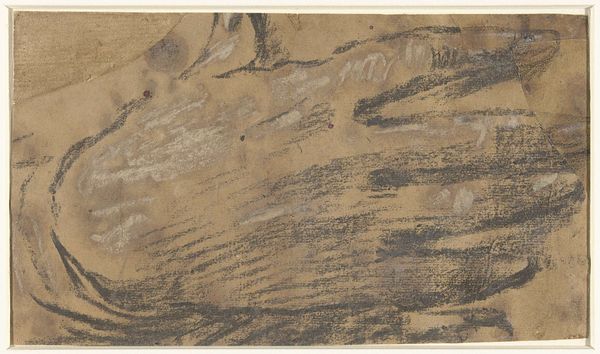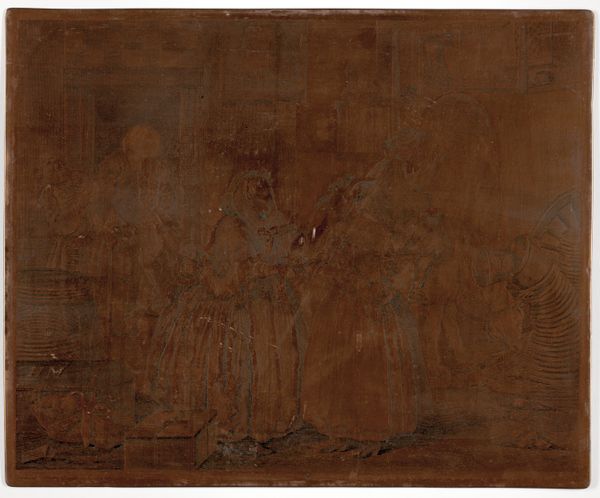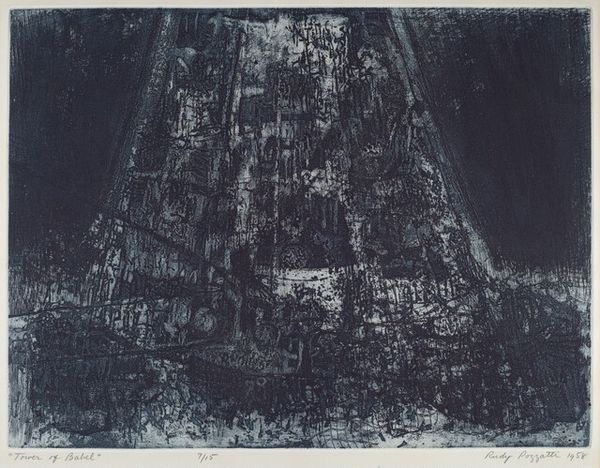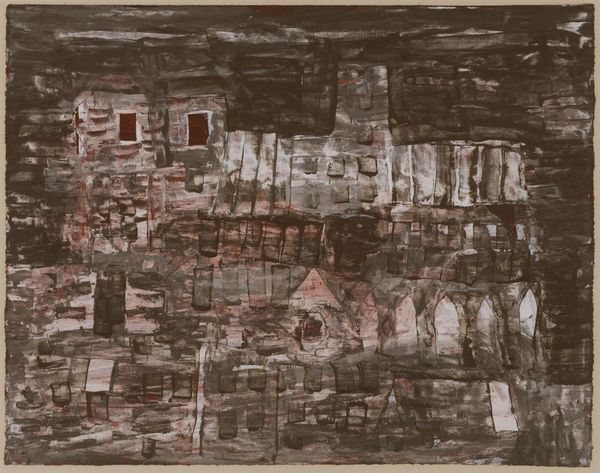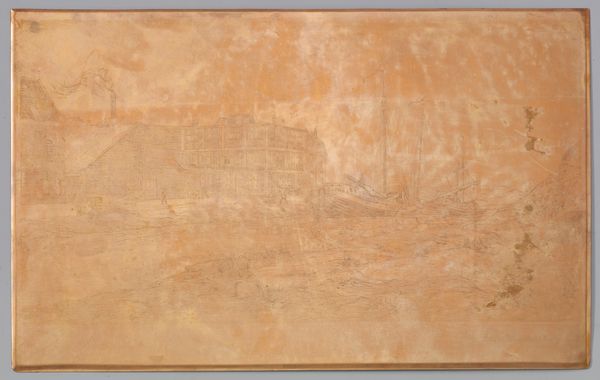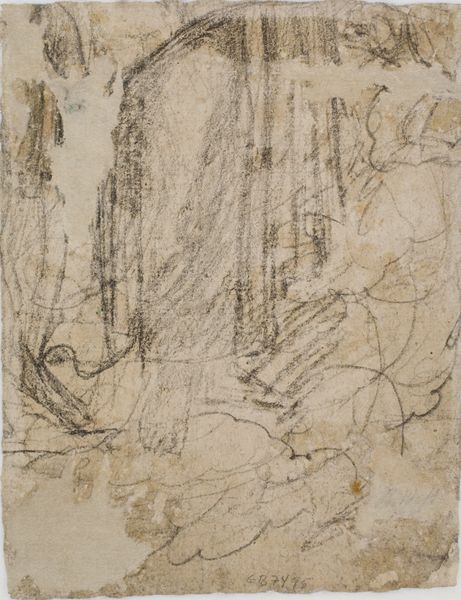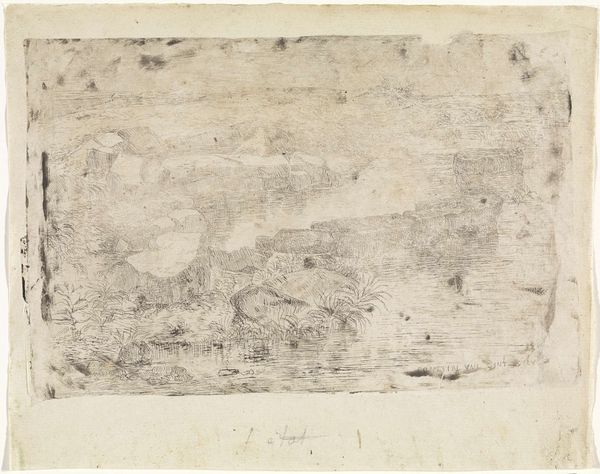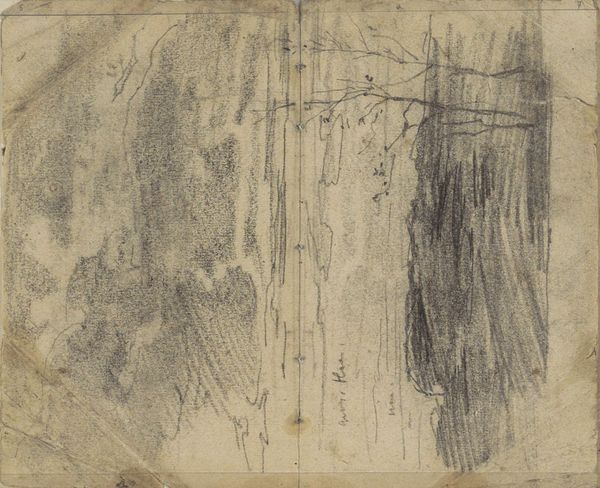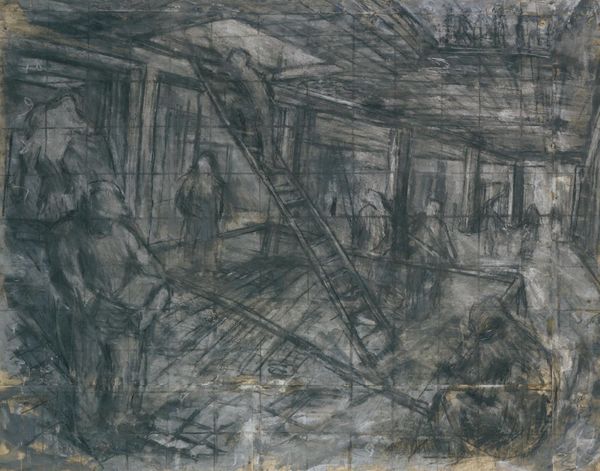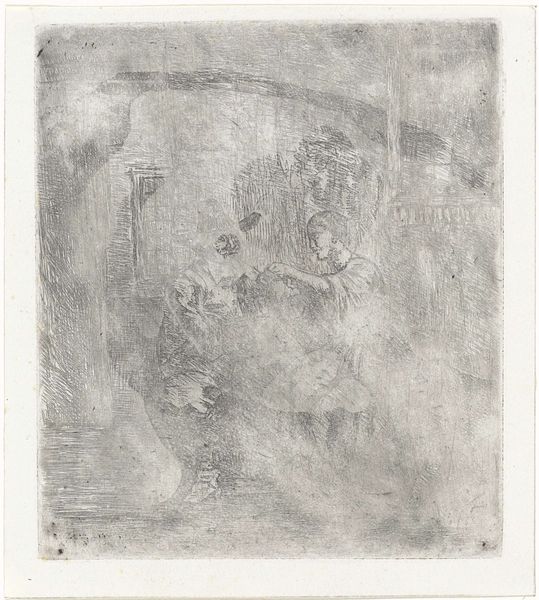
Copyright: Anselm Kiefer,Fair Use
Editor: This is Anselm Kiefer's "Lilith," created in 1989 using mixed media, including paint and what looks like other matter—straw, maybe? It feels heavy and somber. The color palette is muted, almost monochromatic, and there is an abstract landscape. How do you interpret this work? Curator: When I look at "Lilith," I see more than just a somber landscape; I see a commentary on historical erasure and feminine power. Kiefer is deeply engaged in grappling with German history, particularly its darker aspects. Lilith, in Jewish folklore, represents a powerful, independent woman who refused to submit to Adam. She's often demonized, cast as the original rebellious woman. Considering this context, how might the use of matter-painting – those heavy, layered textures – contribute to your understanding? Editor: The texture and the earthiness…it's almost like he’s unearthing something buried. Bringing a suppressed story to light. Is that the artist intention, to literally "dig" up past? Curator: Exactly. He uses the materiality of the painting – the weight of it, the roughness – to evoke the weight of history and the burden of memory. By associating this ravaged landscape with Lilith, Kiefer seems to reclaim her, not as a demon, but as a symbol of resistance and a reminder of voices silenced throughout history. Doesn't the Neo-Expressionist style further underline the intensity of his message? Editor: Yes, I see what you mean! The emotion feels very raw, unrefined. And so he is inviting the viewer to question the dominant narratives? To seek alternative stories? Curator: Precisely! It encourages us to look critically at history, gender roles, and power dynamics. The work prompts us to question who gets to tell the story, and whose voices are marginalized. What will you take away from this encounter? Editor: I’ll remember that even abstraction can convey powerful political and social narratives. Thanks! Curator: The pleasure is mine! Remember that art is rarely ever created in a vacuum, its social significance endures and constantly shifts over time.
Comments
No comments
Be the first to comment and join the conversation on the ultimate creative platform.

